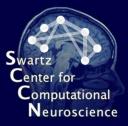Measuring EEG in Virtual Reality to Test Designs
Monday, December 15th, 2008 Imagine being able to measure the cognitive impact of a workspace or building design before you built it. A group of architects and academic researchers is doing just that in California as they monitor the brainwaves (EEG) of users as they interact with a proposed design in a virtual reality (VR) environment.
Imagine being able to measure the cognitive impact of a workspace or building design before you built it. A group of architects and academic researchers is doing just that in California as they monitor the brainwaves (EEG) of users as they interact with a proposed design in a virtual reality (VR) environment.
 Not only do they expect to avoid costly design errors, make way-finding easier and otherwise optimize designs for how our minds work but they expect to gain scientific insight into how we form “cognitive maps” as we navigate. This is doing cognitive design and some applied cognitive science at the same time.
Not only do they expect to avoid costly design errors, make way-finding easier and otherwise optimize designs for how our minds work but they expect to gain scientific insight into how we form “cognitive maps” as we navigate. This is doing cognitive design and some applied cognitive science at the same time.
The project is described well in a post on MSNBC, Get Lost and Get Better Architecture. The end of the article is most interesting to cognitive designers. Berns a Neuroscientist at Emory University speculates that ”the relative mobility of EEG technology could lend itself to poring over the brain waves of people in existing buildings as well”. This might open up a new level of rigor for the cognitive design of spaces.